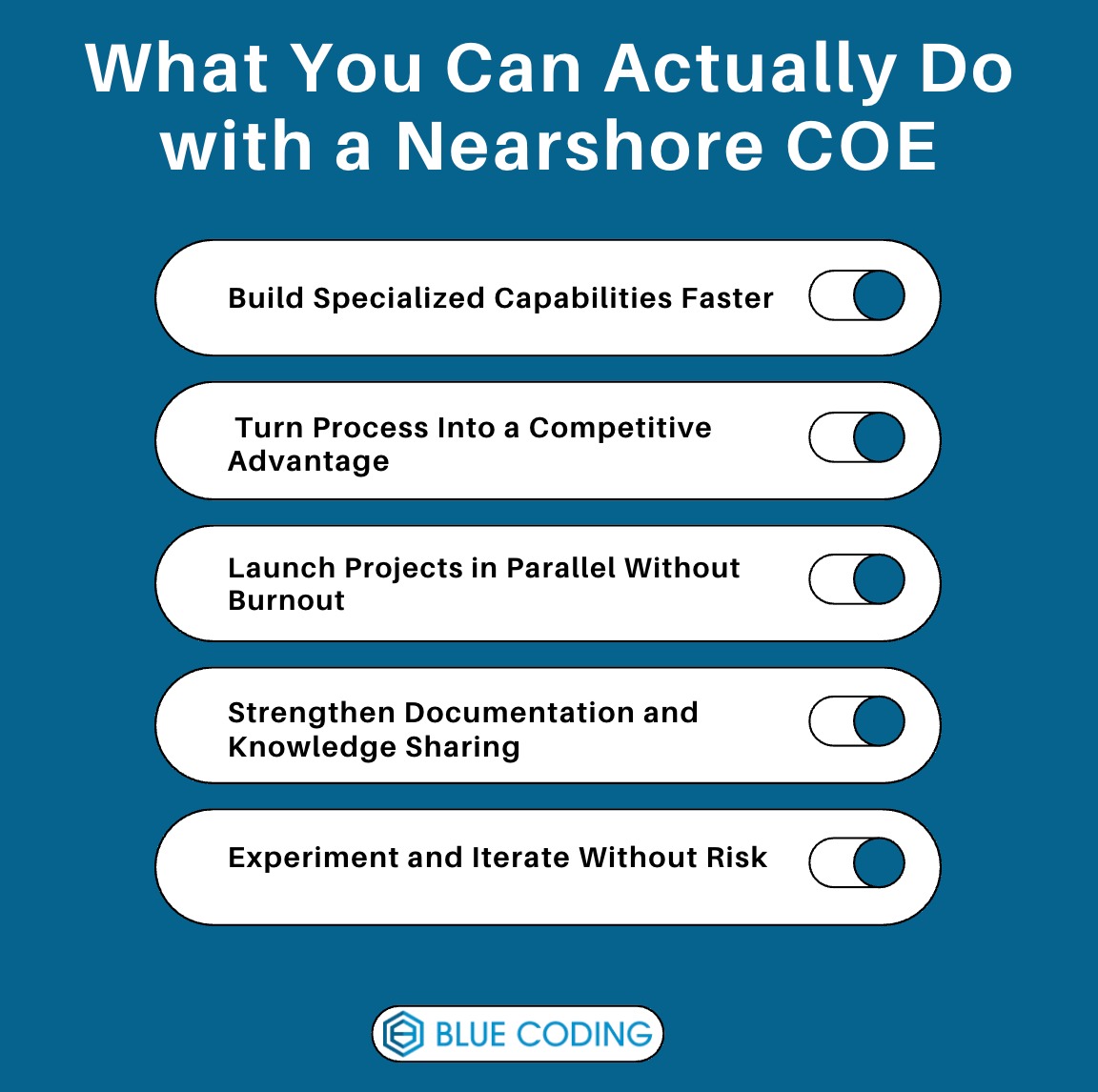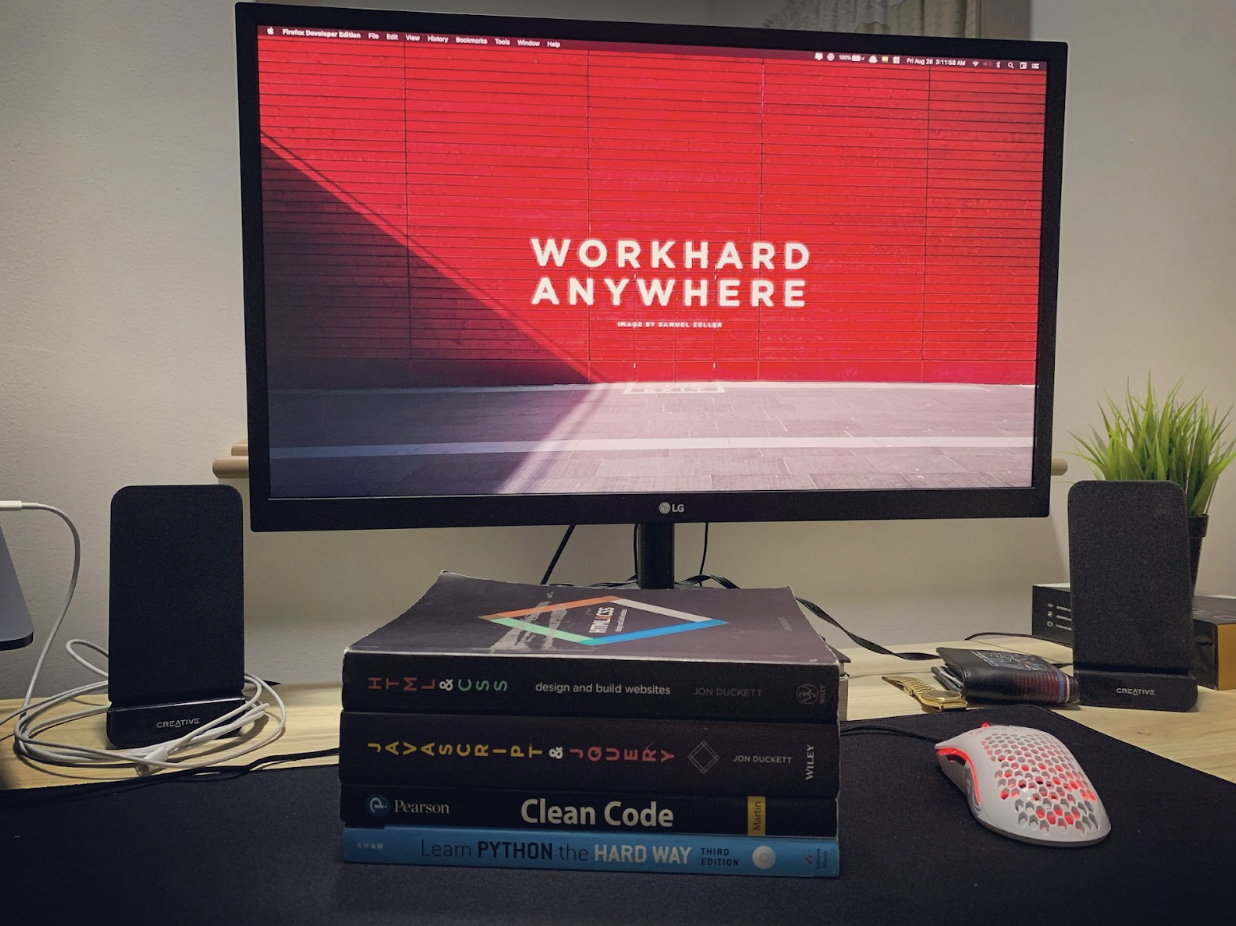 News
News
When startups picture a Center of Excellence, they often imagine something far off, expensive, and out of reach. But that’s not the case anymore, especially if you’re looking at COE in LATAM. Latin America has become a hotspot for building lean, smart, and scalable teams without the bloated budgets. A nearshore COE offers all the strategic benefits of centralized expertise, without the time zone headaches or enterprise-level costs. For startups willing to think beyond traditional hiring, the LATAM region opens up real possibilities to grow faster, work smarter, and keep ownership of your product in-house. Let’s take a closer look at how this works.
What Is a Nearshore Center of Excellence (COE)?
What exactly is a nearshore Center of Excellence (COE), and why does it matter for modern businesses? At its core, a nearshore COE is a dedicated hub or team based in a nearby country (usually with a similar time zone) that focuses on delivering specialized technical or business capabilities. Unlike a simple outsourced team, COE is linked to building deep expertise in a specific area, such as software development, QA testing, data analytics, or UX design. Think of it as a high-performance satellite office that drives innovation, enforces best practices, and helps standardize processes across your company, all while being more accessible and culturally aligned than far-off offshore alternatives. The beauty of a nearshore COE lies in the balance it offers: you get the cost efficiency and scalability of outsourcing, combined with real-time collaboration and smoother communication due to geographical proximity. Businesses set up these centers to centralize knowledge, speed up project delivery, and scale teams with less friction. And because they’re built for long-term value rather than short-term projects, COEs are usually staffed with top-tier professionals who are invested in continuous improvement and aligned with your company’s vision.

What You Can Actually Do with a Nearshore COE

A nearshore COE isn’t just about relocating tech talent. It’s about reshaping how your team builds, scales, and gets things done. If you’re still thinking it’s only for big companies with massive budgets, it’s time to look at what’s really possible here. Because when you set it up right, a nearshore COE becomes a flexible, reliable engine that drives growth without the usual startup chaos. Let’s look at some of the real possibilities that come with it.
》 Build Specialized Capabilities Faster.
One of the most exciting parts of setting up a nearshore COE is how quickly you can build focused teams around specific goals. It helps you in building skill-specific units that tackle real gaps in your current setup. Whether it’s a dedicated QA team, a DevOps squad, or a group focused on internal tools, you can build that within weeks in a nearshore location. It’s fast, it’s efficient, and it keeps your in-house team from being spread too thin.
》 Turn Process Into a Competitive Advantage.
Every startup struggles with finding its rhythm. A nearshore COE gives you a space to shape, test, and improve internal processes without adding friction to your main workflows. You can experiment with agile practices, refine your deployment pipeline, or document your architecture better, all in a space that’s designed for structure and improvement. Once it’s working, you roll that back into your core team. The result? Your company starts running smarter, not just faster.
》 Launch Projects in Parallel Without Burnout.
When you’ve got one small team juggling everything, some things will always get pushed back. That’s where a nearshore COE can really shine. It gives you extra bandwidth to run multiple projects at once without exhausting your people. Your core team can stay focused on user-facing updates while the COE handles new features, maintenance, or R&D work. Things move in parallel, not one after the other, and that gives your roadmap a serious boost.
》 Strengthen Documentation and Knowledge Sharing.
Let’s be real. In early-stage companies, documentation often gets skipped. But that catches up with you later. A nearshore COE gives you space to finally fix that. Your team there can take the lead on standardizing documentation, creating onboarding materials, and making sure important decisions aren’t just sitting in someone’s head. Over time, your COE becomes more than just a team—it becomes the place that holds your company’s technical memory.
》 Experiment and Iterate Without Risk.
Trying something new shouldn’t mean risking your whole product. Nearshore COE possibilities create a safe space to test ideas, prototype features, and explore new technologies without slowing down your main pipeline. You can build something small, break it, learn from it, and improve, all without affecting what your users see. That ability to experiment in a controlled environment is a quiet superpower, especially for fast-moving startups.
The Startup-Smart Way to Build a nearshore COE Without Breaking the Bank
When startups think about setting up a Center of Excellence, especially in a nearshore location, the first reaction is usually hesitation. It sounds like something only big enterprises can afford, right? But here’s the truth: startups not only can afford it, they can actually benefit more from it than they might think. With the right approach, a nearshore COE becomes less of a luxury and more of a smart, long-term investment. Let’s break it down.
1. Start Small, Scale Smart.
You don’t have to launch a full-scale COE with 50 engineers on day one. Startups can begin with a small, focused team, maybe two to five people, dedicated to a single function like backend development or QA. Nearshore regions, especially in Latin America or Eastern Europe, offer access to top-tier talent at lower costs compared to local hiring. This means you can build that initial team without burning through your runway. As your business grows, you gradually scale up, turning that small team into a full-fledged COE that’s already aligned with your goals.
2. Fixed Costs Become Predictable.
One of the most startup-friendly aspects of a nearshore COE is financial clarity. Instead of juggling unpredictable freelance costs or constantly hiring and rehiring locally, a COE helps establish a more stable structure. You can lock in monthly rates, avoid the overhead of full-time local employees, and keep expenses under control. For cash-conscious founders, that predictability is a huge win. You’re not just saving money; you’re managing it wisely.
3. Access to High-Quality Talent Without the Overhead.
Let’s be honest: top developers in San Francisco or London come with top-tier salaries. But the same skillsets are available in nearshore markets at a fraction of the cost. When you build a nearshore COE, you're not sacrificing quality. You’re simply tapping into regions that offer better ROI. Many nearshore professionals come from global tech ecosystems, speak fluent English, and understand Western work culture, making collaboration smoother and faster from day one.
4. Faster Delivery Without Compromising Innovation.
For startups, speed is survival. The faster you ship features, fix bugs, and respond to user feedback, the better your chances of success. A nearshore COE puts that speed within reach. Because you're working in similar time zones, you avoid the delays that often come with offshore setups. You get faster iterations, daily standups that actually align with your hours, and the kind of real-time communication that accelerates product delivery without bottlenecks.
5. Long-Term Value, Not Just Short-Term Help.
While freelancers and outsourcing agencies can help fill immediate gaps, a nearshore COE builds internal knowledge, continuity, and team culture over time. Instead of rotating contractors who move on after a few weeks, your COE team becomes an extension of your startup. They grow with you, understand your product deeply, and can even lead innovation down the line. That long-term value is what really makes a COE worth the upfront effort, even for early-stage companies.
6. So… Can You Afford It?
Absolutely. It’s not about having millions in the bank. It’s about using the budget you do have more effectively. By starting small, focusing on strategic hires, and choosing the right nearshore region, startups can create a powerful, affordable Center of Excellence that lays the groundwork for future growth. The spoiler was right: yes, you can afford a nearshore COE. And it might just be one of the smartest moves your startup ever makes.
Choosing the Right Partner
Wondering how to actually build a nearshore COE without the usual trial and error? That’s where we come in. At Blue Coding, we’ve helped startups and growing companies set up efficient, scalable nearshore teams across LATAM, with a focus on long-term value, not short-term fixes. From finding the right talent to setting up operational frameworks that actually work, we’ve seen what makes a nearshore COE succeed (and what holds it back). If you're ready to explore what this could look like for your business, we’re here to help you plan smart and scale with confidence. Don't wait further guys! Let’s talk about your goals on a aContact Us | Free outsourcing strategy call - Blue Coding!



